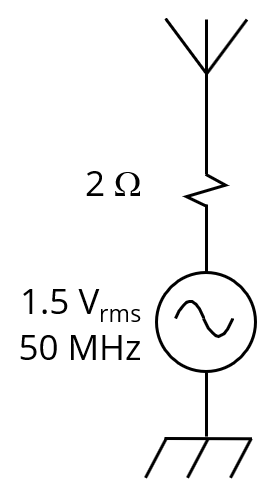EMC Question of the Week: September 20, 2021

What is the maximum power that could be radiated from a 50-MHz source with a source impedance of 2 Ω and an open-circuit rms voltage of 1.5 volts?
- < 1 nW
- 56 mW
- 280 mW
- > 1 Watt
Answer
The best answer is “c.” To maximize the power drawn from the source, it would be connected to a conjugate-matched load. In this case, that would be a 2-Ω load. The voltage across this load would be half of 1.5 volts or 0.75 volts. The power delivered to this load would be (0.75)2/2 or about 280 mW.
It's important to note that a great deal of effort would be required to match a 2-Ω source to a lossless antenna. Unintentional antennas that cause products to fail to meet radiated emissions requirements generally have a minimum radiation resistance of about 36 Ω. The power delivered by this source to a 36-Ω antenna would be about 56 mW.
Finally, the amount of radiated power required to exceed the FCC or CISPR32 radiated emissions limits at 50 MHz is about 1 nW. This corresponds to about 0.2 mV driving a 36-Ω antenna.
Have a comment or question regarding this solution? We'd like to hear from you. Email us at
